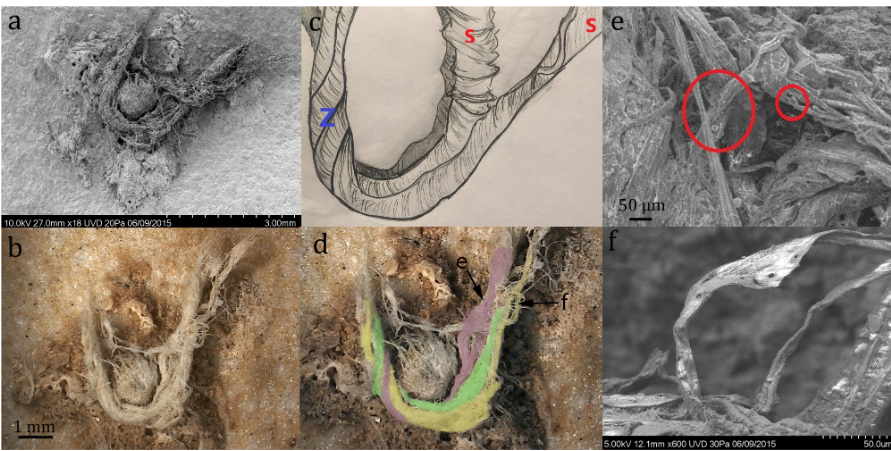
The mental imagery of sluggish brutes regarding the Neanderthals has proven itself heavily distorted from reality. The latest findings that show our extinct cousins were capable of remarkable cognitive abilities come from the site of Abri du Maras, in France, where scientists have found fragments of twisted fiber between 41,000 to 52,000 years old that were fashioned by Neanderthals.
The study, which was published in the journal Scientific Reports, shows that Neanderthals mastered fiber technology and likely grasped basic mathematics judging from the patterning of the yarn and cords.
Discovering tools this old is a huge achievement in and of itself. Much of what we know about Middle Paleolithic culture comes from bones and stone tools since these are the only things that can typically last for so long before becoming degraded to oblivion.
The team of researchers, led by Bruce Hardy, a professor of anthropology at Kenyon College, Ohio, excavated multiple collapsed caves at the French site. They eventually came across a 60-mm-long Levallois flake — a stone tool made with the earliest core preparation and flake removal technology known to us — with adhering cord fragments.
“The flake was recovered in situ with the cord adhering to its inferior surface and was covered by sediment and breccia, demonstrating that the cord is at least contemporary with the deposition and burial of the flake and is therefore Middle Paleolithic in origin.,” the authors wrote in their study.

Upon examination, the researchers found that the ancient cord is comprised of 3 bundles of fibers in an S-twist, which were then plied together with a Z-twist to form a 3-ply cord.
In effect, this is the earliest evidence of spinning yarn from natural fibers found thus far. It implies that Neanderthals were more than capable of manufacturing advanced tools. Although it’s not clear how Neanderthals used fiber technology, the researchers assume that Neanderthals employed such materials to fashion anything from bags to fishing nets and baskets.
The fibers seem to be derived from bark, which also suggests that Neanderthals understood the seasonality of conifer tree growth.

Most importantly, the fiber fragments point to a basic understanding of math. To turn fibers into yarn and yarn into cord, the manufacturer has to understand how to combine various fibers, which can be seen as akin to combinations of pairs and sets of numbers in mathematics. A cord made out of three individual fibers is stronger than one made out of two, and the Neanderthals seemed to have understood this very well.
“These impressions reveal weaving technology and the production of textiles. The complexity of the textiles suggests that they are part of a well-established tradition that began much earlier,” the authors wrote.
Excavations at the Abri du Maras site are still ongoing, and the researchers are close to reaching a 90,000-year-old sediment layer. Perhaps even more striking artifacts and examples of ancient Neanderthal behavior might surface from the digs.









